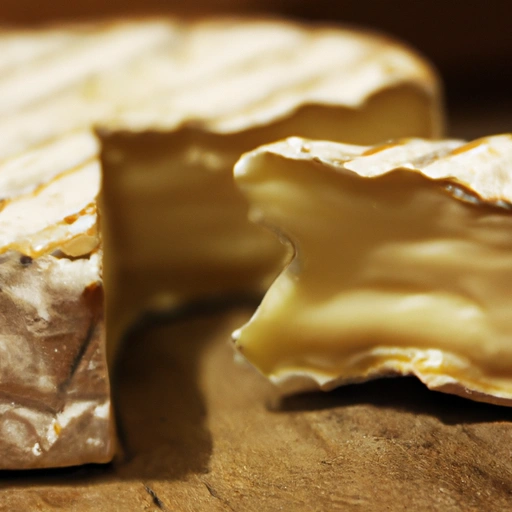Brie
Description

Brie is a soft cow's milk cheese named after the French region from which it originated. It's pale in color with a slight grayish tinge under a rind of white mold. The rind is typically eaten, with its flavor depending largely on the ingredients used and its manufacturing environment.
Common uses
Brie is widely regarded as a versatile cheese that can be enjoyed on its own or as part of various dishes. It's often featured in cheese platters, sandwiches, salads, and as a decadent topping for meats and vegetables.
Nutritional value
Calories
One ounce (28 grams/approximately 1 inch cube) of Brie cheese contains roughly 95 calories (398 kilojoules).
Protein
Brie provides about 5.9 grams of protein per 3.5 ounces (100 grams).
Fat
A serving of Brie contains about 7.8 grams of fat, which includes 4.9 grams of saturated fat per ounce (28 grams).
Carbohydrates
This cheese contains less than 1 gram of carbohydrates per ounce (28 grams).
Vitamins
Brie is a good source of B-vitamins, particularly vitamin B12 and riboflavin (B2).
Minerals
The cheese offers calcium, at about 52 mg per ounce (28 grams), and also provides phosphorus and zinc.
Health benefits
Brie is rich in vitamins and minerals, such as calcium and phosphorus, which are essential for healthy bones and teeth. The protein content also makes it a beneficial component of a balanced diet.
Potential risks
Due to its high saturated fat and cholesterol content, Brie should be consumed in moderation. Individuals with lactose intolerance or dairy allergies should avoid Brie. Pregnant women are advised to avoid unpasteurized Brie due to the risk of listeriosis.
Common recipes
Brie is often used in baked dishes, where it melts beautifully, or in cold dishes, adding a creamy texture. It's a common ingredient in appetizers like Brie en Croute, main dishes such as Chicken with Brie, and even dessert recipes that pair the cheese with fruits.
Cooking methods
Brie can be baked, grilled, or simply served at room temperature to accentuate its naturally creamy texture.
Pairing with other ingredients
Brie pairs wonderfully with fruits like apples, berries, and figs; nuts such as almonds and walnuts; and a variety of bread and crackers. It also complements both red and white wines, as well as light beers and ciders.
Summary
Brie is a famous soft cheese with a rich history and a creamy, buttery flavor. It's nutritional yet indulgent, versatile in the kitchen, and pairs well with a myriad of ingredients, making it a cherished addition to food recipes worldwide.